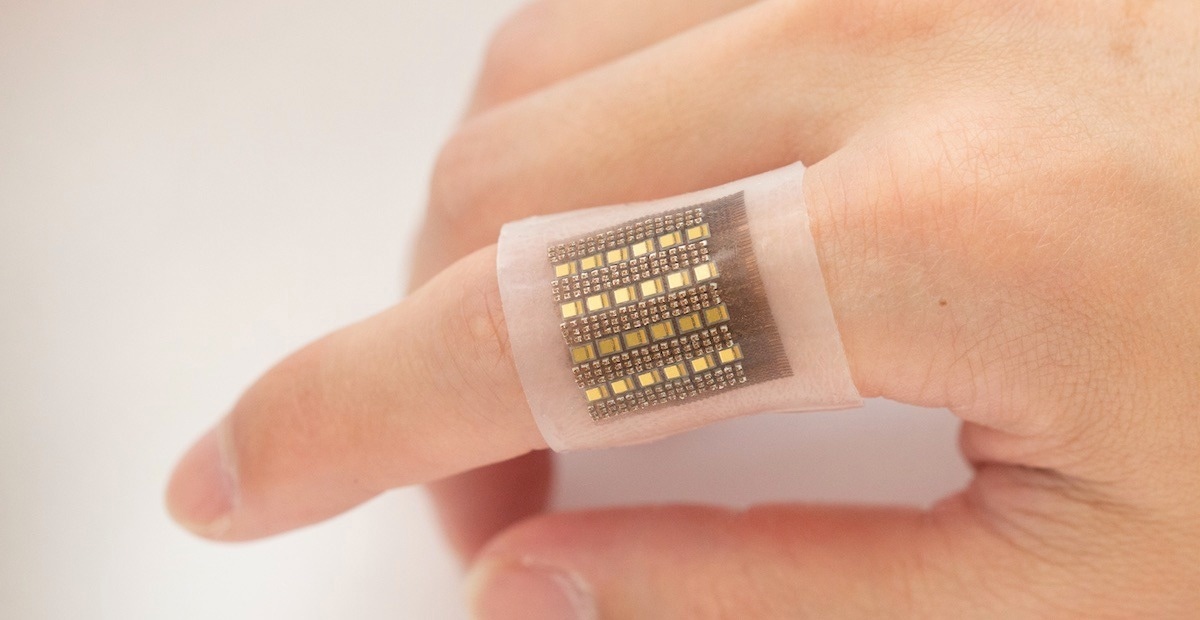Wearable devices are electronic devices that can be worn for a variety of reasons, such as tracking daily activity or managing a schedule, but importantly they empower wearers and healthcare clinicians by granting access to key health data, which can be used to diagnose and control health conditions.

Image Credit: UC San Diego
Recently, at the University of San Diego, a research team has been working on a photoacoustic sensor that could give clinicians access to key data that will allow them to diagnose tumors, organ malfunction, and other health concerns. The sensor is incorporated into a wearable skin patch and monitors biomolecules such as hemoglobin in deep tissue.
Published in the journal Nature Communications, the team reveals how its new innovative wearable photoacoustic sensor could grant access to an unprecedented wealth of data that could revolutionize clinical diagnosis in the near future.
With access to vital information and the ability to diagnose a wide array of potentially life-threatening health conditions in a rapid and straightforward manner, researchers will be able to gain a greater understanding of these pathophysiological conditions and thus facilitate timely medical interventions to ensure better outcomes in the future.
Endogenous Biomolecule Monitoring
While the team believes its system can be adapted and recalibrated to detect other biomolecules, such as cytochrome, glucose, lipid, melanin, nucleic acid,., and proteins, for the purpose of this study, they were monitoring hemoglobin.
The amount and location of hemoglobin in the body provide critical information about blood perfusion or accumulation in specific locations. Our device shows great potential in close monitoring of high-risk groups, enabling timely interventions at urgent moments.
Sheng Xu, Professor of Nanoengineering, UC San Diego
Those with low blood perfusion are at a greater risk of vascular disease and are more likely to have heart attacks. Moreover, abnormalities in hemoglobin levels can signal other issues, such as the presence of a tumor. Therefore, monitoring and tracking endogenous biomolecules in the body could improve the data clinicians are working with and overcome some of the challenges existing technologies are held back by.
For instance, X-Ray-computed tomography monitoring and magnetic resonance imaging (MRI) are restricted by the fact they are usually large, cumbersome devices that are limited in terms of access and availability. Furthermore, these technologies typically only offer immediate insights into the state of biomolecules, making them less efficient for long-term tracking.
Continuous monitoring is critical for timely interventions to prevent life-threatening conditions from worsening quickly.
Xiangjun Chen, Nanoengineering Ph.D. student, UC San Diego
The new, innovative wearable skin patch developed by Xu and the team has a relatively low form factor and is extremely flexible, which facilitates active non-invasive monitoring over a prolonged period of time.
On-the-Go Monitoring
With the capacity to map hemoglobin in 3D, the device also offers excellent submillimeter spatial resolution and can penetrate the skin for the monitoring of hemoglobin in deep tissues, whereas other existing wearables can only measure at the surface level of the skin.
The patch is comprised of a network of piezoelectric transducers and laser diodes that are held together in a soft silicone polymer matrix. The laser diodes transmit pulsed lasers, which penetrate the skin tissue, and biomolecules absorb the optical energy and bounce back acoustic waves, which are then detected by the photoacoustic sensor.
Piezoelectric transducers receive the acoustic waves, which are processed in an electrical system to reconstruct the spatial mapping of the wave-emitting biomolecules.
Xiaoxiang Gao, Postdoctoral Researcher, UC San Diego
The new design is also safer than X-Ray techniques and more comfortable than undergoing an MRI scan. However, the team wishes to rework the design, miniaturize bulky ultrasound probes, and eliminate the need to use laser machines, both of which impact device portability and ease of use.
Future efforts will be focused on fabricating a fully integrated wearable to facilitate on-the-go, long-term measurement capabilities. The hope is that the wearable photoacoustic health sensor will allow clinicians to make early and effective diagnoses of life-threatening conditions.
References and Further Reading
Dameron, E. (2022) Wearable skin patch monitors hemoglobin in deep tissues, Today. Available at: https://today.ucsd.edu/story/wearable-skin-patch-monitors-hemoglobin-in-deep-tissues
Gao, X. et al. (2022) “A photoacoustic patch for three-dimensional imaging of hemoglobin and core temperature,” Nature Communications, 13(1). Available at: https://www.nature.com/articles/s41467-022-35455-3









 Add Category
Add Category

